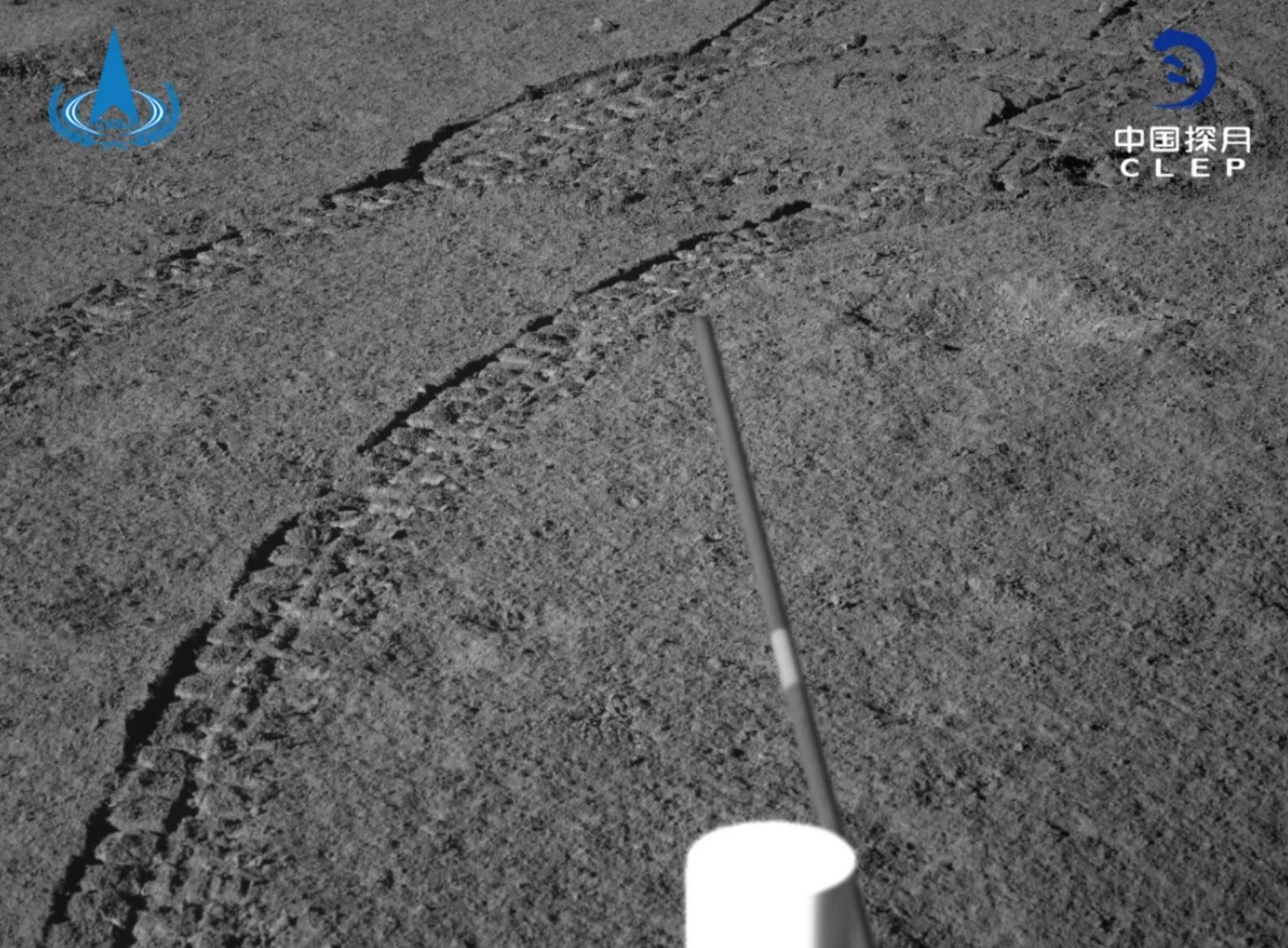China's moon mission robots wake up for a 23rd lunar day as team snags major award

China's Chang'e 4 spacecraft have awoken for another lunar day on the far side of the moon, while on Earth the mission received a prestigious international award for its accomplishments.
The Chang'e 4 mission, which consists of a lander and a rover, made the first-ever touchdown on the far side of the moon on Jan. 3, 2019. Since then, the two robots have lasted 648 days, returning reams of science data and images from Von Kármán Crater during the local day; the rover and lander hibernate during the roughly 14-Earth-day-long lunar nights.
In recognition of the mission's exploration and science achievements, the International Astronautical Federation (IAF) chose to present the World Space Award to three of Chang'e 4's leaders. The award recognizes outstanding contributions to space science, space technology, space medicine, space law or space management.
Related: The latest news about China's space program
Yu Dengyun, Sun Zezhou and Wu Weiren received the accolade, with Yu, the deputy designer-in-chief of China's Lunar Exploration Program, delivering a highlight lecture at the 71st International Astronautical Congress 2020 on Monday (Oct. 12) to mark the award. The annual event was held online due to the COVID-19 pandemic.
Yu's talk highlighted a number of breakthroughs that made the mission possible. Among these were demonstrating the first continuous, reliable communication with the far side of the moon through the Queqiao relay satellite. Queqiao orbits a special, gravitationally stable point beyond the moon, from which it maintains constant line-of-sight with both ground stations on Earth and the spacecraft on the lunar far side, enabling communications.
Another key challenge to the Chang'e 4 mission was developing the capability for an autonomous, high-precision landing in complex terrain on the lunar far side. Notably the landing area available to Chang'e 4 was just 5% that of its predecessor mission, Chang'e 3, which landed on the near side in 2013.
Breaking space news, the latest updates on rocket launches, skywatching events and more!
Yu also highlighted breakthroughs in ground control, launch systems and the Longjiang-2 microsatellite, whose feats included using independent propulsion to enter lunar orbit and, amazingly, imaging a solar eclipse in South America from the moon. Yu also revealed that the first radioisotope thermoelectric generator developed in China was used on the mission and performed well.
In addition to the technological breakthroughs, Yu discussed science highlights of the mission so far, including insights into the lunar subsurface structure using a penetrating radar, potential radiation doses astronauts will receive on the moon and the composition of materials discovered by the rover; the mission is also taking unprecedented low-frequency radio astronomy measurements.
The Chang'e 4 robots began their 23rd lunar day of activities over the weekend. The Yutu 2 rover resumed work on Oct. 10 with the lander following suit on Oct. 11.
Yutu 2 is set to continue its journey northwest from the landing site and will target a roughly 12-inch (30 centimeters) rock on the rim of a nearby crater for analysis with a spectrometer. The rover has used that instrument to analyze a range of specimens in Von Kármán crater, notably causing a stir when it discovered an impact melt breccia initially described as "gel-like."
China's Lunar Exploration Program released a seventh batch of science data from the mission on Oct. 9, including data from the lander's low-frequency astronomy instrument and the Yutu 2 rover's radar, spectrometer and panoramic camera.
The Chang'e 4 mission involved thousands of scientists and engineers in China as well as payload contributions from Germany, Sweden, the Netherlands and Saudi Arabia. Russia contributed radioisotope batteries to keep the spacecraft warm during the deep cold of the lunar night, while Argentina has assisted with ground station support.
Chang'e 4 was originally a backup to Chang'e 3, which successfully landed in Mare Imbrium in 2013. That mission's lander and one of its science payloads remain operational after nearly 7 years on the lunar surface.
Follow us on Twitter @Spacedotcom and on Facebook.

Andrew is a freelance space journalist with a focus on reporting on China's rapidly growing space sector. He began writing for Space.com in 2019 and writes for SpaceNews, IEEE Spectrum, National Geographic, Sky & Telescope, New Scientist and others. Andrew first caught the space bug when, as a youngster, he saw Voyager images of other worlds in our solar system for the first time. Away from space, Andrew enjoys trail running in the forests of Finland. You can follow him on Twitter @AJ_FI.




